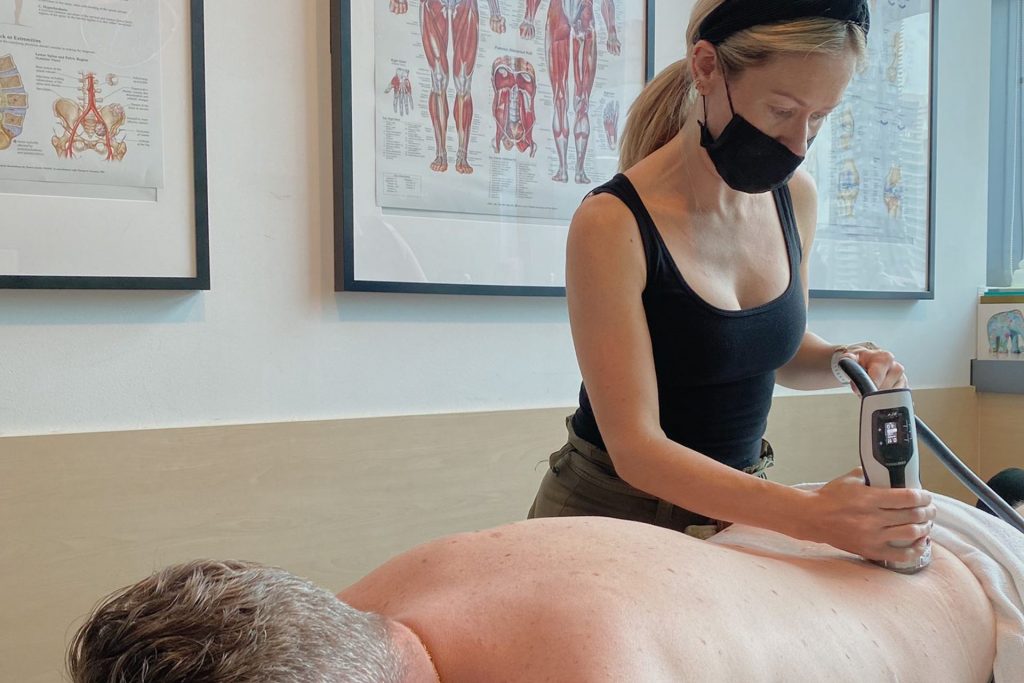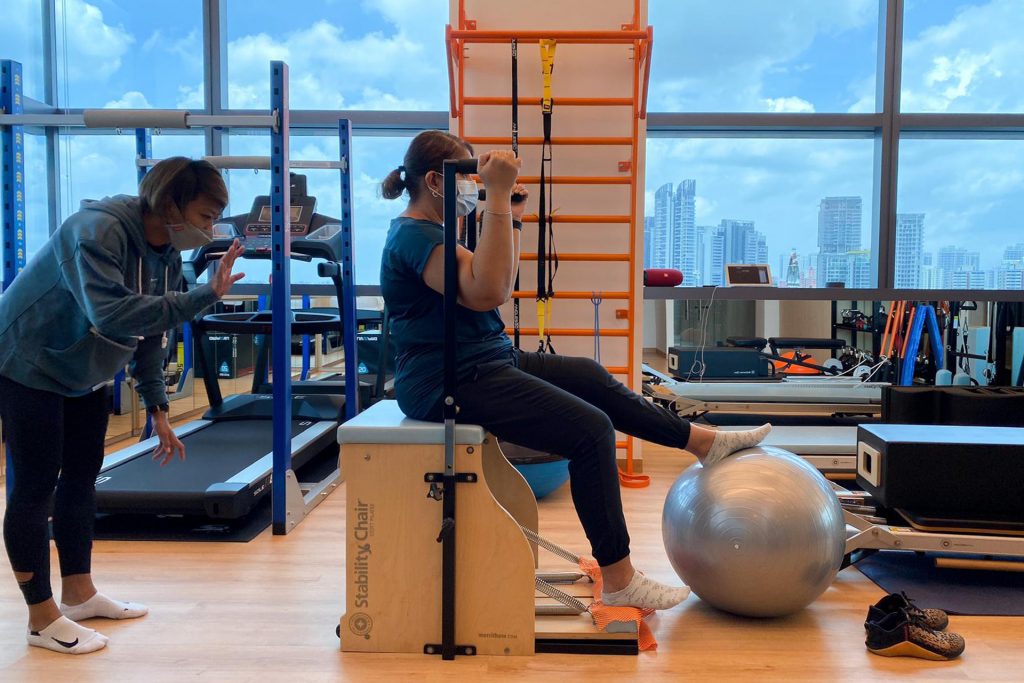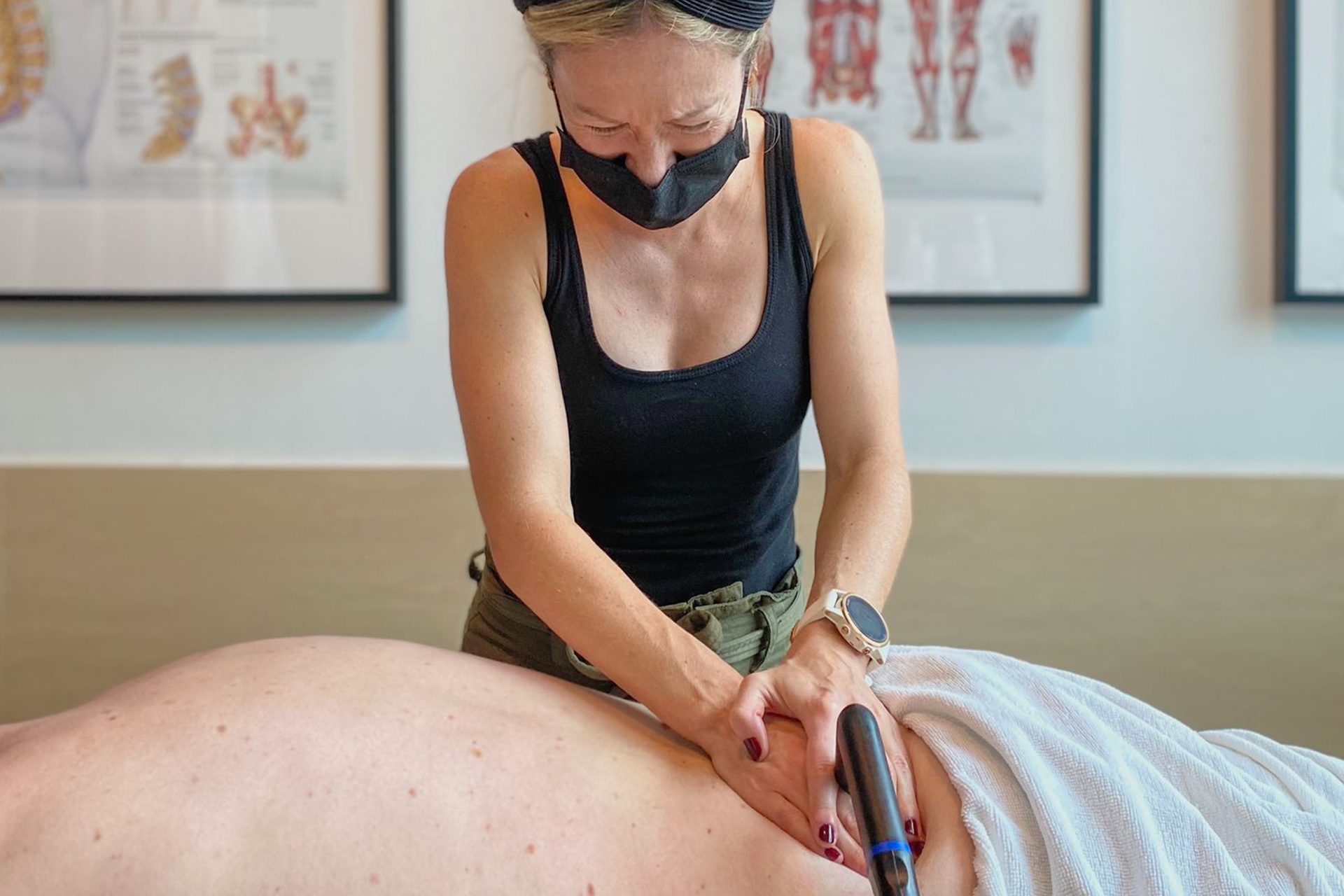Whether it’s muscle strain, Achilles tendonitis, plantar fasciitis, or persistent back problems, if you engage in regular physical activity, like running, you’ll probably experience a sports injury at some point.
Sports treatment is a process that uses the body’s natural abilities to help people heal from or manage pain. It optimizes biomechanical movement and treats diverse sports and musculoskeletal injuries involving joints, ligaments, muscles, tendons, and nerves.
What Are the Benefits of Sports Physiotherapy Treatment?
Sports physiotherapists focus on several aspects of injury management, allowing practitioners to provide numerous health benefits throughout the entire body in sports injury prevention and performance enhancements. Instead of focusing on a specific problem or injury, a sports physiotherapist will work to address the underlying cause(s) of the pain or discomfort.
Using various techniques, including the latest evidence-based technologies, strengthening exercises, stretching movements, Pilates, and sports massage therapy, sports treatment can be intrinsically helpful in activating the body’s natural healing processes.
A physiotherapist can treat many sports injuries, as they work closely with athletes to help them recover from their pain and prevent any future complications. If you sustain an injury while playing your favorite sport or exercising at home, don’t wait for it to get worse before seeking professional treatment from HelloPhysio!

When Should You See a Sports Physiotherapist?
Injuries happen when there’s an imbalance between our muscles and tendons through excessive loading or repetitive activities that cause degenerative musculoskeletal dysfunctions. Here are some of the most common conditions our clinical team sees at our sports treatment clinic in Singapore:
- Achilles Tendonitis The Achilles tendon is the largest and strongest tendon in the body and connects your heel bone to your calf muscle. When overstretched, you could develop Achilles tendonitis, the primary culprit of Achilles tendon pain. You may feel more pain when exercising, which is more noticeable the following day after an intense workout. If left untreated, it can continue to degenerate and lead to a more severe Achilles tendon rupture.
- Hip Impingement When the ball of the hip gets pinched between the hip socket, the joint’s cartilage lining becomes damaged, resulting in inflammation. Patients experience symptoms that include stiffness in the groin or thighs, which can lead to arthritis. When a person has impinged joints, they experience pain during specific movements because their joint cannot move through its full range of motion. Improving the range of motion for patients suffering from hip impingement pain may seem logical. However, treatment is focused instead on developing strength, endurance, and motor control of the hip joint, pelvis, and lower back to alleviate the impingement instead of a range of motion. People suffering from femoroacetabular impingement can treat the condition through properly prescribed exercises and education to avoid activities that worsen the condition.
- Iliotibial Band Syndrome Iliotibial band syndrome is a condition that causes pain on the outside of the knee. It most often occurs in endurance athletes such as marathoners or triathletes. Your iliotibial band is a dense band of connective tissue that extends from the hip bone to the tibia and kneecap on the outside of the thighbone. Inflammation results from repetitive motion from the iliotibial band, which irritates the tissue beneath it to cause pain.
- Patellofemoral Pain Syndrome Patellofemoral pain, sometimes called “runner’s knee,” is an injury occurring behind the knee and is intensified with the increase in load-bearing and high-impact activities when the knee is flexed. Because a number of factors can contribute to patellofemoral pain syndrome, knee pain treatment is tailored to each patient to strengthen the core muscles, the hip flexor, the trunk, or the knee to alleviate pain.
- Plantar Fasciitis The connective fibrous fascia tissue expands and contracts several thousand times daily. Due to this daily repetitive motion, the plantar fascia can become overworked and irritated, causing acute pain and stiffness due to collagen degeneration around the bone closest to the heel. Runners commonly experience degenerative musculoskeletal disease. A sports physio can help restore function and strengthen the lower leg muscles to decrease the load and strain and promote cell growth and collagen synthesis to prevent recurring microtears.
- Shoulder Impingement The syndrome which causes pain and tenderness in the shoulder joint is often accompanied by stiffness and difficulty moving the joint normally. An injury sets off a series of inflammations and swellings, which places more pressure on the arm’s bursa and tendons, resulting in an unresolved pain cycle. As the arm is elevated, the tendon of the rotator cuff and bursa are compressed against bone. Patients with rotator cuff tendinosis suffer from impingement symptoms caused by a calcified tendon.
- Tennis Elbow Tennis elbow is a rheumatic condition characterized by inflammation or microtears of the tendons of the forearm muscles and the outside of the elbow. These tendons degenerate from overuse and are caused by repetitive motions that lead to pain and tenderness when you bend your wrist away from your palm. Initial symptoms include burning or aching along the outside of your forearm or elbow. Without elbow physiotherapy treatment, the pain worsens over time.
Book an Appointment
How Can a Sports Physiotherapist Help with My Sports-Related Injury?
At HelloPhysio, our sports physiotherapy team develops comprehensive, detailed assessments to develop a goal-oriented, tailored treatment plan and structured rehabilitative program to speed up recovery time and manage your injury effectively. In addition to manual physiotherapy to change poor biomechanical movement patterns, adjunct therapies may alleviate the pain of some of the most common sports injuries mentioned above.
For instance, INDIBA cellular repair technology can effectively treat sports injuries, stimulate tissue regeneration, accelerate recovery from Achilles tendonitis, or treat rheumatic diseases, such as tennis elbow, to activate the body’s anti-inflammatory and tissue recovery process.
Extracorporeal Shockwave Therapy may be recommended to encourage soft tissue healing and break down calcification near bone structures in patients with shoulder or hip impingements.
Sports Massage Therapy can be an effective part of your recovery from sport-related or non-athletic muscle injuries.
MAGNETOLITH reduces pain and inflammation and is a healing accelerator for difficult-to-treat musculoskeletal disorders, such as bone injuries, stress fractures, fractures, tendinopathies, and arthritic conditions.
LightStim® Red Light Therapy works at the cellular level to drive a host of physiological processes. It enhances mitochondrial function to boost energy, accelerate collagen production, activate stem cells, and provide biostimulation to allow the body to heal itself and reduce pain.

Clinical Pilates provides patients with controlled movements to help the body activate anti-inflammatory cellular processes integral to inducing the immunological healing response of damaged tissues and stimulating the production of cytokines that help regulate local and systemic inflammation.
Dry Needling uses thin monofilament needles to create microtears to induce myofascial release to trigger the body’s natural immune response to act and bring nutrient-rich blood to the injury site, boosting tissue repair.
Sports treatment is a vital component in the rehabilitation process for sports injuries. A sports physiotherapist can help you get back on track and feel better quickly. HelloPhysio is a sports injury clinic in Singapore that can provide treatment and advice to speed healing.
Contact us today for more information about how we work with patients or what conditions we treat!

